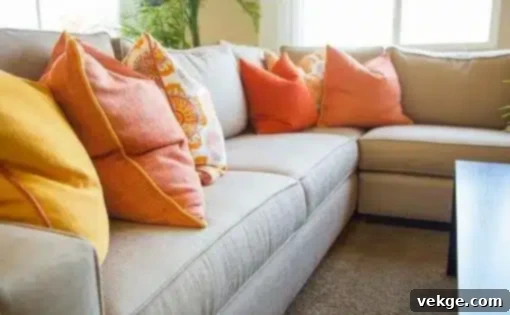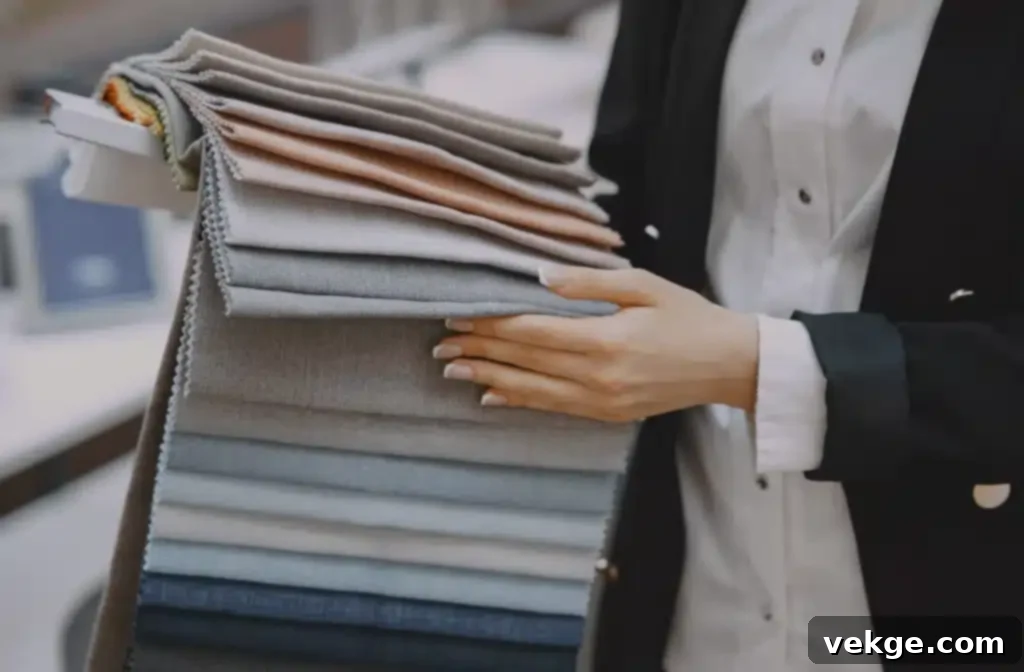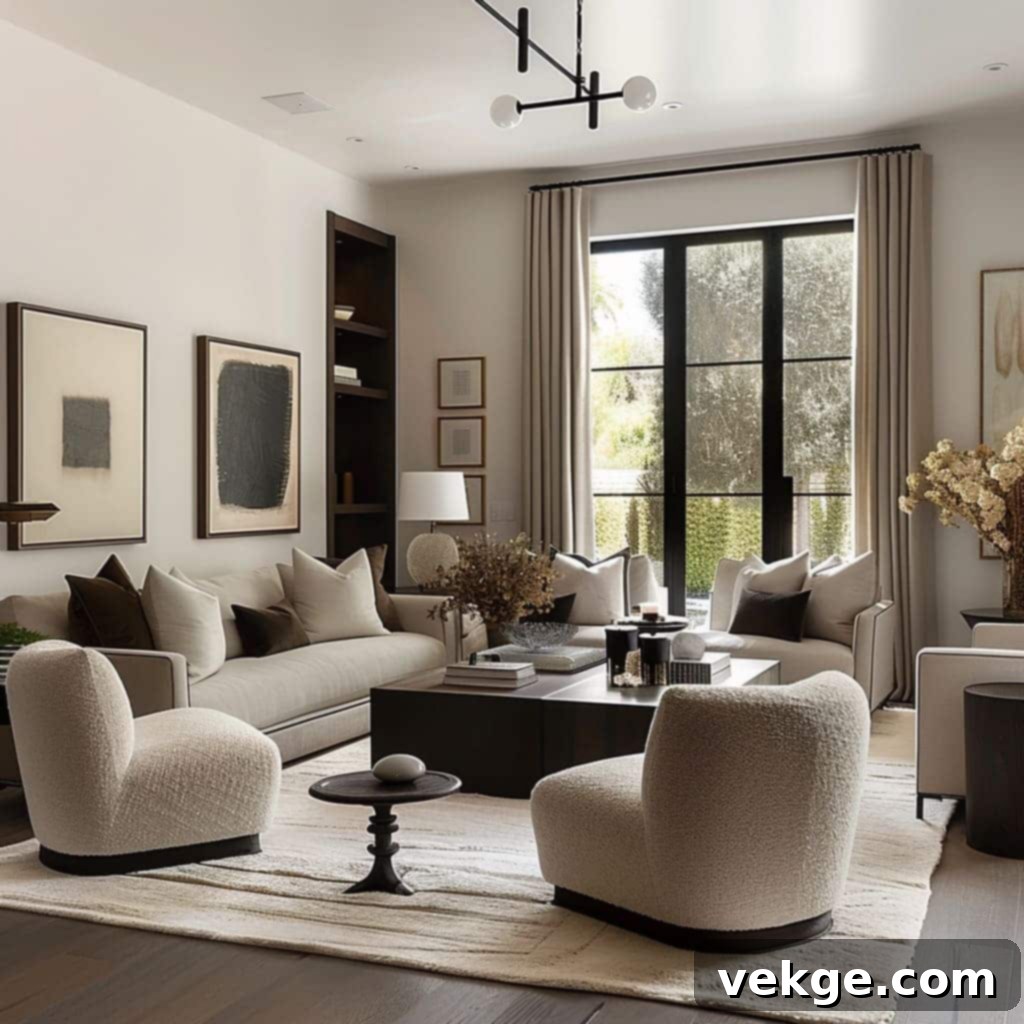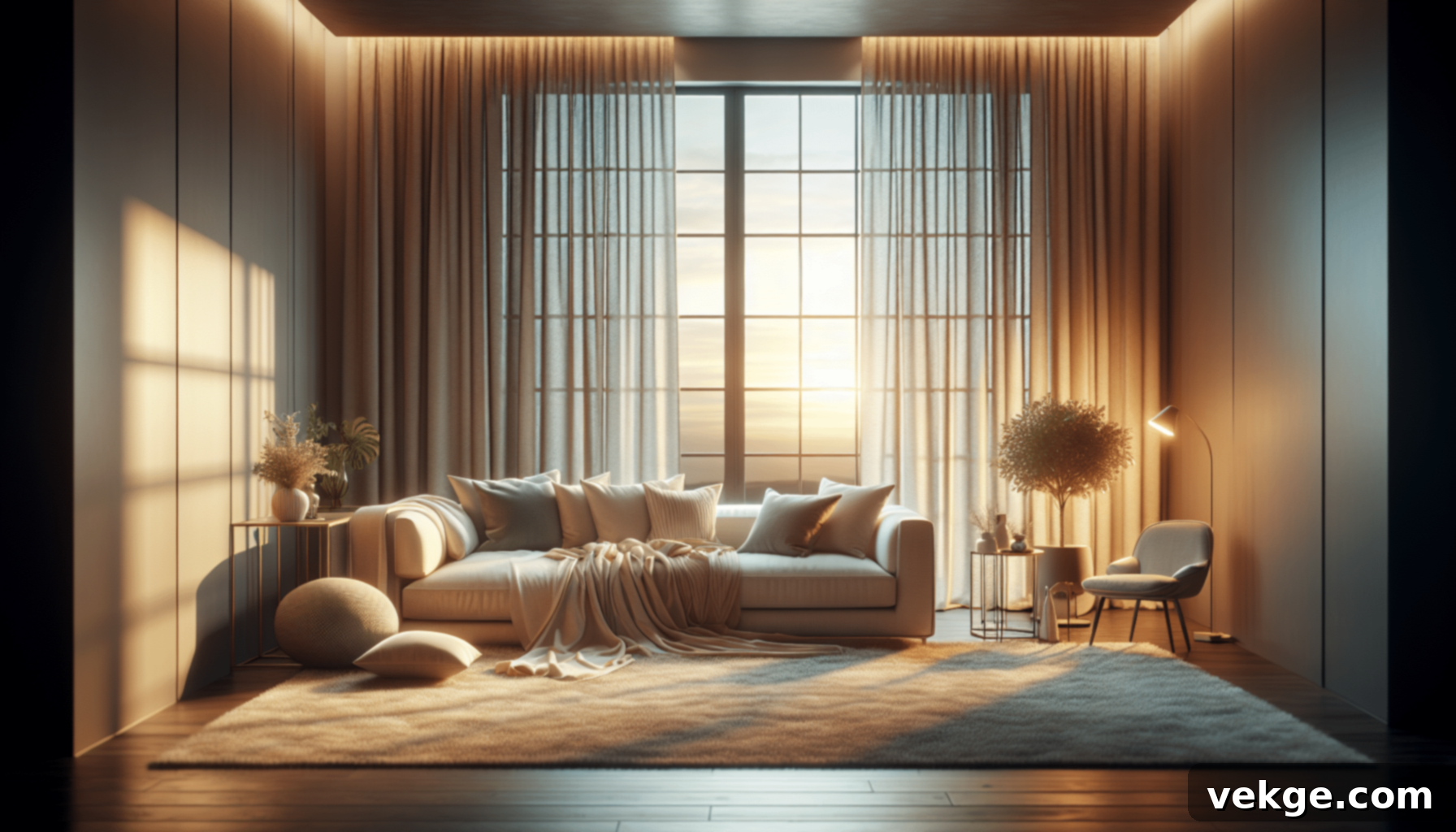The Future of Comfort: How Temperature-Regulating Fabrics Transform Your Home
The quest for ultimate comfort within our homes is a perpetual journey, and often, the unsung heroes in this pursuit are the fabrics that surround us daily. From the sheets that cradle us through the night to the loungewear that embraces us during quiet evenings, textiles play a more significant role in our well-being than typically acknowledged. Historically, fabrics have provided basic insulation or breathability. However, a revolutionary advancement has transformed their potential: the advent of temperature-regulating fabric. This innovative technology has not merely improved home life; it has fundamentally redefined it, ushering in an era of “smart comfort” that intuitively adapts to our individual physiological needs and the ambient environment.
Imagine a living space where your textiles are not just passive materials but active participants in maintaining your ideal personal climate. This is the promise of temperature-regulating fabrics. They represent a significant leap from conventional textiles, moving beyond simple warmth or coolness to offer a dynamic thermal management system. This advanced capability means greater comfort, reduced energy consumption, and a more harmonious living environment, proving that the future of home comfort is intricately woven into the very fabrics of our lives. These adaptive textiles provide a consistent layer of personal climate control, minimizing the common discomforts associated with fluctuating temperatures and paving the way for truly optimized living.
Enhancing Comfort Across Seasons with Adaptive Textiles

Maintaining an optimal indoor environment is a constant challenge, regardless of the season’s whims. While sophisticated home heating and cooling systems bear the primary responsibility for climate control, the textiles that come into direct contact with our skin exert an equally profound, and often more immediate, influence on our comfort levels. Traditional fabrics primarily serve as insulators or light coverings. However, the revolutionary advent of temperature-regulating technologies embedded within fabrics transforms them into dynamic agents of personal thermal management, providing true adaptive comfort.
These smart textiles are engineered to actively respond to your body’s microclimate. When your body temperature rises – perhaps on a sweltering summer night or during a moment of exertion – the fabric works to dissipate excess heat, creating a cooling sensation. Conversely, on chilly mornings or during the colder months, these innovative textiles store and gently release warmth, enveloping you in a soothing embrace. This proactive approach to thermal comfort means the end of restless nights spent tossing and turning, caught between being too hot or too cold. The dream of bedsheets that intelligently adjust to your body temperature is no longer a futuristic fantasy but a tangible reality, promising a future where truly uncomfortable nights become an obsolete memory, paving the way for deeper, more restorative sleep.
The benefits of temperature-regulating fabrics extend far beyond individual comfort, contributing significantly to the overall stability and efficiency of your home’s indoor environment. By moderating direct body temperature, these textiles reduce the need for your HVAC systems to work overtime, constantly adjusting the ambient temperature. This translates into a more consistent and pleasant indoor climate, where fluctuations are minimized. More importantly, this diminished reliance on energy-intensive heating and cooling systems can lead to substantial energy savings and a reduced carbon footprint, aligning personal comfort with environmental responsibility. Imagine the collective impact if every home leveraged these smart textiles to optimize its thermal efficiency, leading to widespread reductions in energy consumption across communities.
One of the most compelling attributes of temperature-regulating textiles is their exceptional versatility. Their advanced properties allow them to be seamlessly integrated into a vast array of home furnishings, transforming every corner of your living space into a haven of adaptive comfort. From luxurious bedding sets, mattress toppers, and plush pillows that guarantee restorative sleep, to stylish curtains that intelligently manage solar heat gain, and even upholstery on sofas and chairs that remains comfortable all year round – the applications are extensive and ever-expanding.
This widespread integration means that the sophisticated benefits of these smart fabrics can be experienced holistically throughout your home. They foster a cohesive and consistently comfortable atmosphere, creating what can be described as “micro-climates” tailored to individual needs. Whether you are unwinding on a sofa draped with a temperature-regulating throw, stepping out of a refreshing shower onto a cozy, temperature-adaptive bath mat, or even working from a home office chair enhanced with these smart materials, every tactile interaction contributes to an elevated and inherently more pleasant living experience. This ubiquitous presence of intelligent textiles truly represents a paradigm shift in how we perceive and achieve home comfort, making adaptive thermal management an integral part of modern living.
Integrating Innovative Textile Technology for a Smarter Home
Embracing the profound benefits of temperature-regulating textiles begins with a strategic focus on the items we interact with most frequently. Given that a significant portion of our lives is spent sleeping, investing in high-quality, temperature-regulating bedding – including sheets, duvets, and pillows – represents one of the wisest initial steps. Such an investment not only elevates sleep quality but also profoundly impacts overall daily well-being, transforming rest into a truly restorative experience, which in turn enhances mood, productivity, and health.
Furthermore, the application of this groundbreaking technology is no longer confined to specialized sportswear or extreme outdoor gear. Temperature-regulating clothing is rapidly becoming a staple in everyday wardrobes, offering continuous comfort throughout the day. These adaptive garments seamlessly adjust to the subtle and often unnoticed temperature fluctuations within indoor environments, ensuring you remain comfortable whether you’re moving between rooms, sitting at your desk, or simply relaxing. This means fewer wardrobe changes and sustained comfort from morning to night, regardless of your activity level or the room’s ambient conditions.

The implications of integrating these smart textiles extend profoundly beyond mere personal comfort; they pave a crucial path towards greater environmental sustainability. By providing a personalized layer of thermal regulation, temperature-regulating fabrics significantly lessen our dependence on energy-intensive heating, ventilation, and air conditioning (HVAC) systems. This reduced reliance directly translates into decreased energy consumption, lowering utility bills, and, more importantly, substantially reducing the environmental impact associated with energy production and greenhouse gas emissions. This eco-conscious approach offers significant ecological benefits, contributing to a greener, more sustainable future for residential living where efficiency and comfort coexist harmoniously.
The intelligent integration of temperature-regulating textiles into home design is a holistic endeavor, reaching beyond individual garments or bedding. It encompasses a comprehensive approach to comfort management, where elements like furniture upholstery, window treatments (curtains and blinds), and even carpets are imbued with this adaptive technology. By strategically incorporating these items throughout the home, homeowners can effectively create bespoke “micro-climates” in different zones. This allows for personalized thermal experiences that cater precisely to the individual preferences and needs of every family member, ensuring that everyone can effortlessly find their ideal comfort zone, whether they are working, relaxing, or sleeping, without compromising on shared living spaces.
At the heart of the exceptional effectiveness and dynamic responsiveness of temperature-regulating textiles lies the ingenious application of phase change material (PCM). These advanced materials are typically microencapsulated and integrated directly into the fabric fibers or foam layers. PCMs possess a remarkable ability to absorb, store, and release latent heat as their physical state changes (e.g., from solid to liquid and vice versa) within a specific temperature range. When your body temperature begins to rise, indicating an excess of heat, the PCMs embedded within the fabric absorb this surplus thermal energy, effectively cooling the skin and preventing overheating, much like ice melting. Conversely, when your body temperature drops and you start to feel cold, the stored heat within the PCMs is released back to your body as they solidify, providing a gentle warming effect. This sophisticated, dynamic, and reversible interaction ensures a consistently comfortable and stable thermal experience, proactively adapting to internal and external conditions without the user having to make any conscious adjustments. This cutting-edge technology, initially developed for NASA to protect astronauts from extreme temperature fluctuations, is now bringing aerospace-level thermal management into the everyday home, offering unparalleled comfort and efficiency.
Transforming Daily Living with Seamless Thermal Comfort
The practical application of temperature-regulating technology translates into tangible, transformative improvements in our daily living. Consider the oppressive heat of a summer heatwave: instead of enduring restless, sweaty nights, bedding infused with adaptive textiles effortlessly adjusts to your body’s temperature, wicking away excess heat and promoting deep, uninterrupted sleep. Conversely, on those crisp, cold mornings when the thought of leaving a warm bed is daunting, these intelligent fabrics offer a gentle warmth that eases the transition, making your entire morning routine more pleasant and less abrupt. The comfort is delivered without any conscious effort on your part, seamlessly integrated into your routine, allowing you to focus on your day rather than discomfort.
The reach of this remarkable technology extends far beyond personal apparel and bedding. It encompasses a broader spectrum of home elements, including temperature-adaptive window treatments that can actively block or retain heat depending on the season, thereby contributing to indoor climate stability and energy efficiency. Similarly, bath linens, from towels to bathrobes, can offer an enhanced post-shower experience, preventing chills in winter and feeling refreshingly cool in summer. This expansion of applications truly broadens the scope of where and how we can experience intelligent, adaptive comfort within our environments, from the bedroom to the bathroom, and beyond.

In our contemporary, increasingly interconnected world, homes have evolved into multifaceted hubs. They serve not only as personal sanctuaries for rest and relaxation but also as dynamic offices, vibrant recreational spaces, and social gathering points. Consequently, optimizing home comfort through innovative technologies like temperature-regulating textiles becomes paramount. This optimization doesn’t just improve the immediate quality of daily life; it actively supports a more thoughtful, efficient, and sustainable lifestyle, aligning personal well-being with broader ecological considerations and fostering a sense of harmony between occupant and environment.
This remarkable technology, which seamlessly weaves advanced comfort, enhanced efficiency, and profound environmental mindfulness into the very fabric of our living spaces, is proving to be an invaluable asset. As individuals navigate the complexities and demands of modern, dynamic lives, striving for balance and well-being, the ability of their home environment to proactively support their comfort is a distinct advantage. It reduces stress, improves sleep quality, and contributes to a greater overall sense of contentment and physical ease within the sanctuary of home.
The transformative potential of temperature-regulating textiles is not limited to the confines of indoor living. These highly adaptable fabrics are also perfectly suited for outdoor applications, extending the luxurious comfort of your indoor spaces to your exterior environments. Imagine lounging on patio furniture or relaxing in a garden hammock crafted from these smart materials, enjoying optimal comfort even as the ambient temperature fluctuates. This innovation offers the exciting possibility of significantly prolonging the usability and enjoyment of outdoor areas, allowing you to embrace the fresh air and natural beauty for longer periods, even during less-than-ideal weather conditions. This remarkable adaptability blurs the traditional boundaries between indoor and outdoor living, creating a truly integrated and comfortable home experience that transcends walls, making every corner of your property a potential haven of relaxation.
In conclusion, temperature-regulating fabrics represent more than just a textile advancement; they embody a fundamental shift in how we approach home comfort and sustainable living. By intelligently managing our immediate thermal environment, these fabrics offer a path to greater personal well-being, significant energy savings, and a reduced ecological footprint. As technology continues to evolve, our homes will become increasingly responsive and intuitive, with temperature-regulating textiles playing a pivotal role in shaping a future where comfort is not just a luxury, but an inherent, adaptive feature of every living space, empowering us to live more comfortably, efficiently, and harmoniously with our planet.
